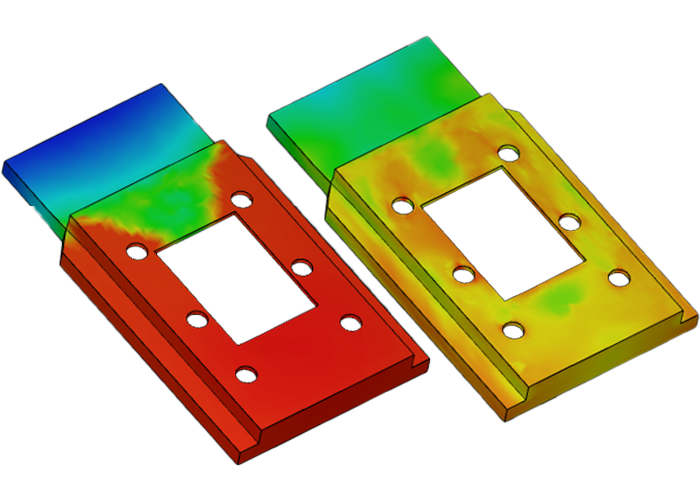
Chemical foaming - clever foaming!
ESPAECIALLY FOR OUR USERSDo you need conclusive criteria that enable you to assess and better optimize the molded part quality of complex injection-molded PU parts mechanically as well as optically, so that part weight, manufacturing problems and production costs can be clearly reduced? Then let us give you a head start by simulating chemical foaming processes in Moldex3D.
Chemical foaming is a process in which the cavity is filled by the foaming material. The gas, which forms the foam structure, is produced by a chemical reaction during the process of the blowing agent, usually supercritical N2 or CO2, and the polymer melt. Other important influencing factors such as gravity, venting points, water (blowing agent) concentration and rotational movement of the blowing agent in the cavity must also be taken into account, which are analyzed during foaming behavior in Moldex3D.
In Moldex3D 2021, the chemical foaming process can be simulated considering the correct process condition thanks to the ‘Chemical Foaming Module’. This supports polyurethane foam analyses and simultaneously considers curing and foam kinetics. With the polyurethane foam injection molding simulation, the filling and foaming behavior of polyurethane can be predicted more accurately and the material quantity and process conditions can be optimized accordingly.
The basis of the foam simulation in Moldex3D is identical to the classical process simulation (component, sprue, mold, temperature control...). In polyurethane injection molding simulation, geometries can only be calculated with a BLM mesh (boundary layer mesh). The selection of the material (PU) and the basic process parameters are supplemented exclusively by parameters of the motive medium such as shot weight, gas volume fraction, shot volume and direction of movement of the bubbles to be generated in the cavity.
In the computation parameters, gas type and gas parameters can be selected. It is recommended that the gravitational force must be considered in the solver setting for the filling calculation for mostly large-volume components, as low-viscosity polyurethane tends to spread at the bottom of the cavity.
Of course, additionally to the known results, supplementary results are available after the calculation, such as local foam density, degree of cure, foam front spread, cell density, cell size distribution, density distribution, which are specific to PU injection molding simulation.
We look forward to your feedback and are more than happy to help you with any further questions.
